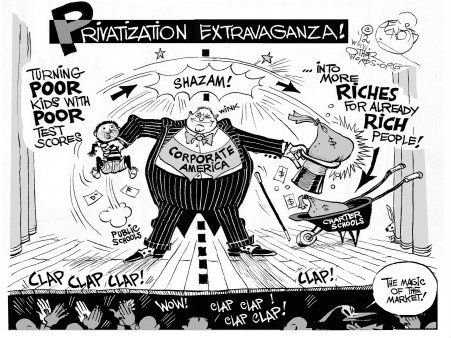Privatization of Education Won’t Erase Savage Inequalities
For generations our society has committed itself to the provision of public education—publicly funded, universally available, and accountable to the public—as the best institution for balancing the needs of each particular child and family with the need to crate a system that secures the rights and addresses the needs of all children.
New articles published this week trace two specific ways we are veering from these ideals.
In the New York Times, Eduardo Porter reports that In Public Education, Edge Still Goes to Rich. Porter quotes Andreas Schleicher, who manages international educational assessments for the Organization for Economic Cooperation and Development (O.E.C.D.): “The bottom line is that the vast majority of O.E.C.D. countries either invest equally into every student or disproportionately more into disadvantaged students. The U.S. is one of the few countries doing the opposite.” Porter provides stunning numbers that document educational investment disparities reminiscent of the Savage Inequalities Jonathan Kozol reported 22 years ago. According to Porter, “In New York… in 2011 the value of property in the poorest 10 percent of school districts amounted to some $287,000 per student…. In the richest districts it amounted, on average, to $1.9 million.” Porter reports that spending per-pupil across the states ranges

